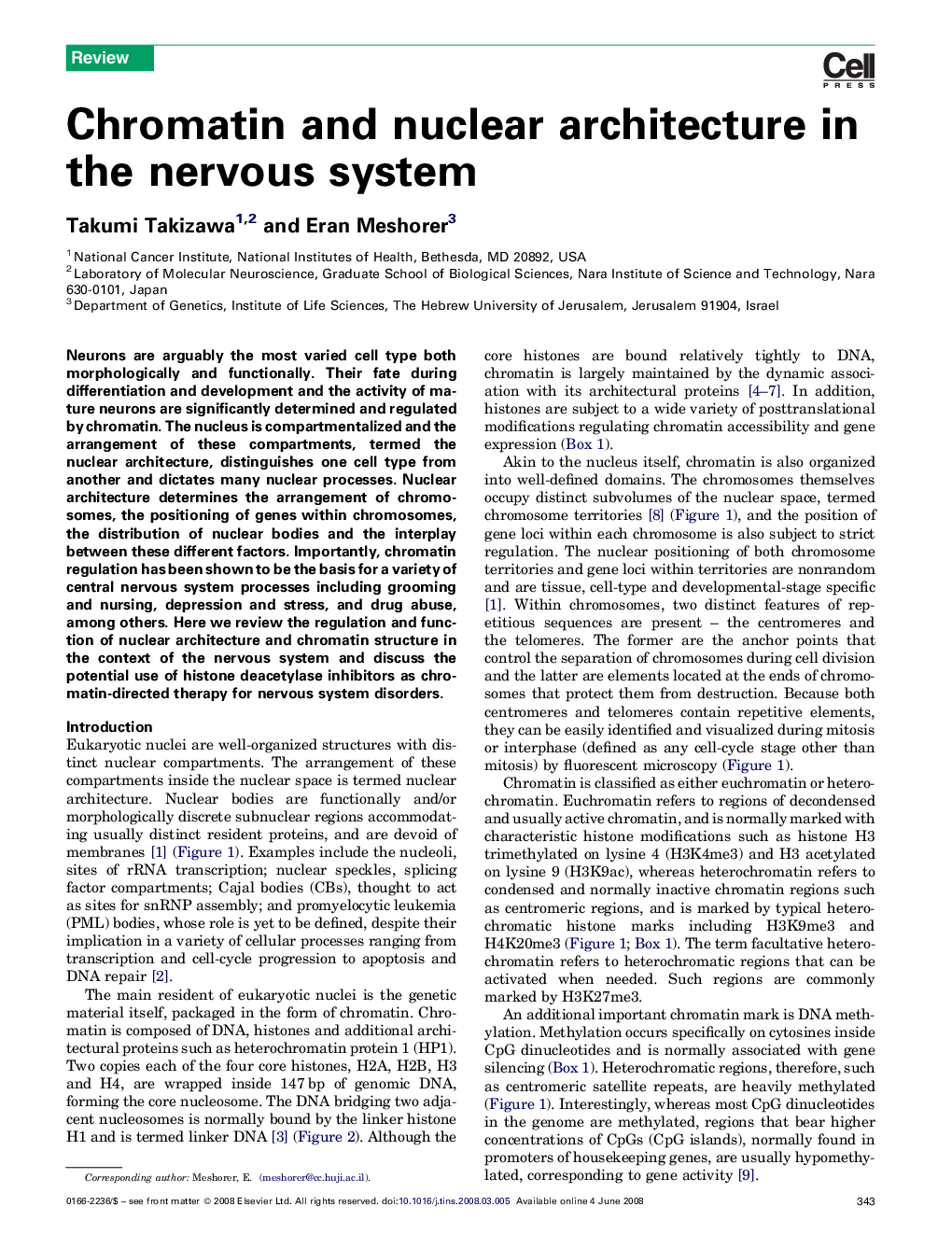| Article ID | Journal | Published Year | Pages | File Type |
|---|---|---|---|---|
| 4354850 | Trends in Neurosciences | 2008 | 10 Pages |
Neurons are arguably the most varied cell type both morphologically and functionally. Their fate during differentiation and development and the activity of mature neurons are significantly determined and regulated by chromatin. The nucleus is compartmentalized and the arrangement of these compartments, termed the nuclear architecture, distinguishes one cell type from another and dictates many nuclear processes. Nuclear architecture determines the arrangement of chromosomes, the positioning of genes within chromosomes, the distribution of nuclear bodies and the interplay between these different factors. Importantly, chromatin regulation has been shown to be the basis for a variety of central nervous system processes including grooming and nursing, depression and stress, and drug abuse, among others. Here we review the regulation and function of nuclear architecture and chromatin structure in the context of the nervous system and discuss the potential use of histone deacetylase inhibitors as chromatin-directed therapy for nervous system disorders.
